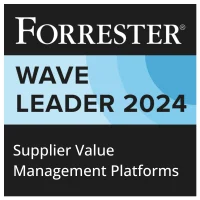Category Management Strategy is a procurement approach that segments an organization’s spend into distinct categories based on market trends and opportunities. It involves developing tailored strategies for each category to maximize procurement value. This strategy uses tools and data to continuously adapt and optimize procurement practices, often leveraging AI to assess market trends and supplier opportunities.
Key Benefits
-Enhanced Spend Visibility: Category management strategy provides a structured approach to categorize and analyze procurement spend. This results in improved data visibility, enabling organizations to make informed decisions based on comprehensive spend analysis.
-Supplier Relationship Optimization: It fosters better supplier relationships by segmenting suppliers into strategic categories, allowing for tailored interactions and negotiations based on the category’s specific strategic importance and priorities.
-Cost Reduction: By focusing on category-specific strategies, organizations can leverage economies of scale and negotiation leverage, ultimately achieving significant cost savings and reduced maverick spending.
-Risk Management Improvement: Categorizing procurement activities allows organizations to better assess and mitigate risks associated with specific suppliers or categories, enhancing overall procurement risk management.
-Strategic Alignment: Category management aligns procurement strategies with organizational goals, ensuring that procurement activities contribute strategically to the organization’s long-term objectives and achieve cross-functional synergy.
Related Terms
-Enhanced Spend Visibility: Category management strategy provides a structured approach to categorize and analyze procurement spend. This results in improved data visibility, enabling organizations to make informed decisions based on comprehensive spend analysis.
-Supplier Relationship Optimization: It fosters better supplier relationships by segmenting suppliers into strategic categories, allowing for tailored interactions and negotiations based on the category’s specific strategic importance and priorities.
-Cost Reduction: By focusing on category-specific strategies, organizations can leverage economies of scale and negotiation leverage, ultimately achieving significant cost savings and reduced maverick spending.
-Risk Management Improvement: Categorizing procurement activities allows organizations to better assess and mitigate risks associated with specific suppliers or categories, enhancing overall procurement risk management.
-Strategic Alignment: Category management aligns procurement strategies with organizational goals, ensuring that procurement activities contribute strategically to the organization’s long-term objectives and achieve cross-functional synergy.
References
For further insights into these processes, explore the following Zycus resources related to Category Management Strategy:
White Papers
Master the UK Procurement Act 2023: Ensure Compliance & Drive Procurement Excellence

Filter by
Compliant Invoicing
Compliant Invoicing refers to the process of generating, submitting, and managing invoices in adherence with legal, regulatory, and contractual requirements.
Continuity Plan
A Continuity Plan is an organized set of policies and procedures designed to ensure that a company’s essential operations can
Cost Modeling
Cost Modeling in procurement refers to the analysis and estimation of the total cost of ownership of a product or
Contract Audit
Contract Audit is a systematic evaluation of agreements and related documentation to ensure compliance with contractual terms, identify discrepancies, and
Procurement Cycle
The Procurement Cycle refers to the end-to-end process through which an organization identifies its needs, sources suppliers, negotiates contracts, places
Procurement Master Data Management
Procurement Master Data Management is the disciplined approach to managing core, consistent procurement information, including supplier, product, and contract data,






















































